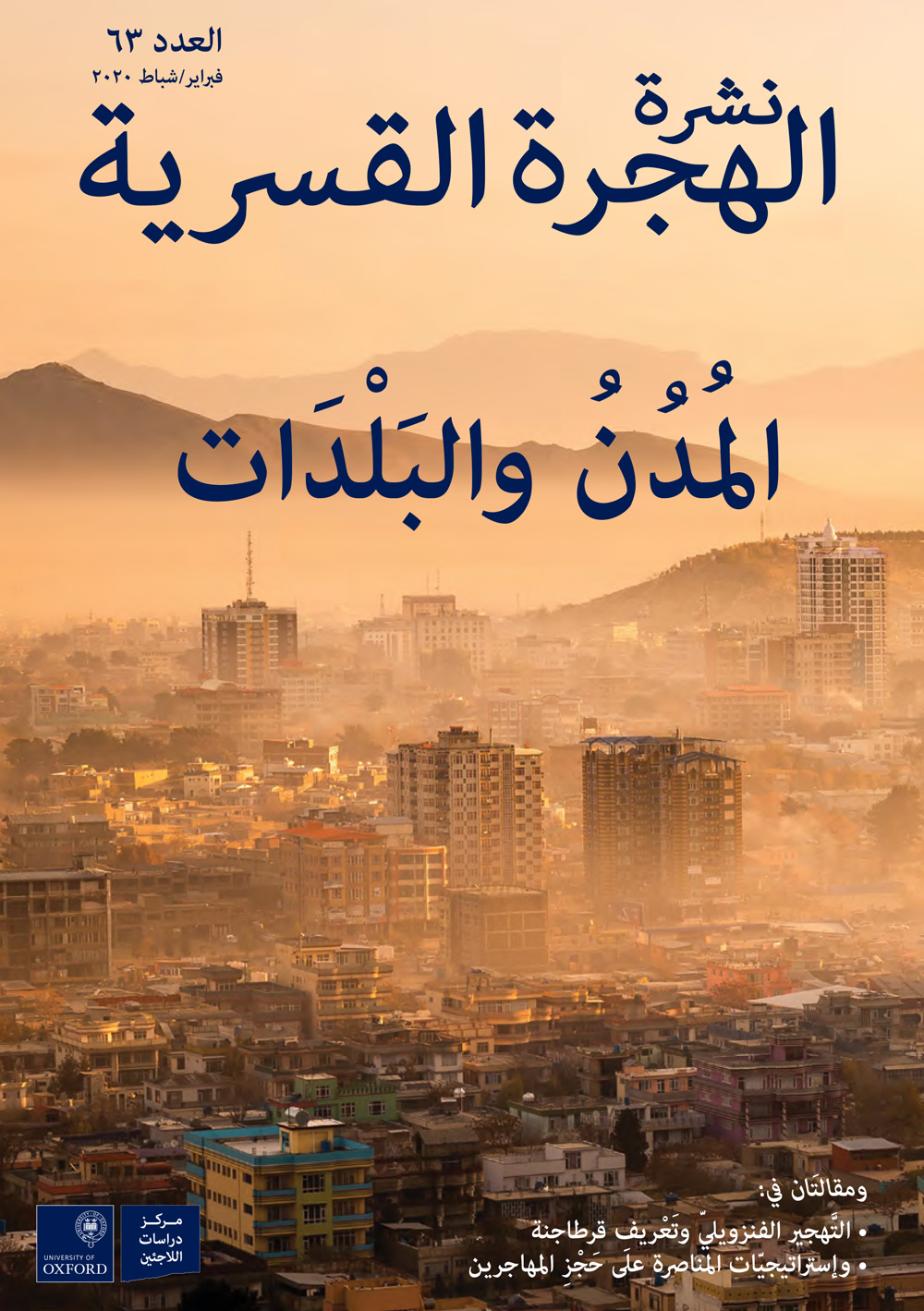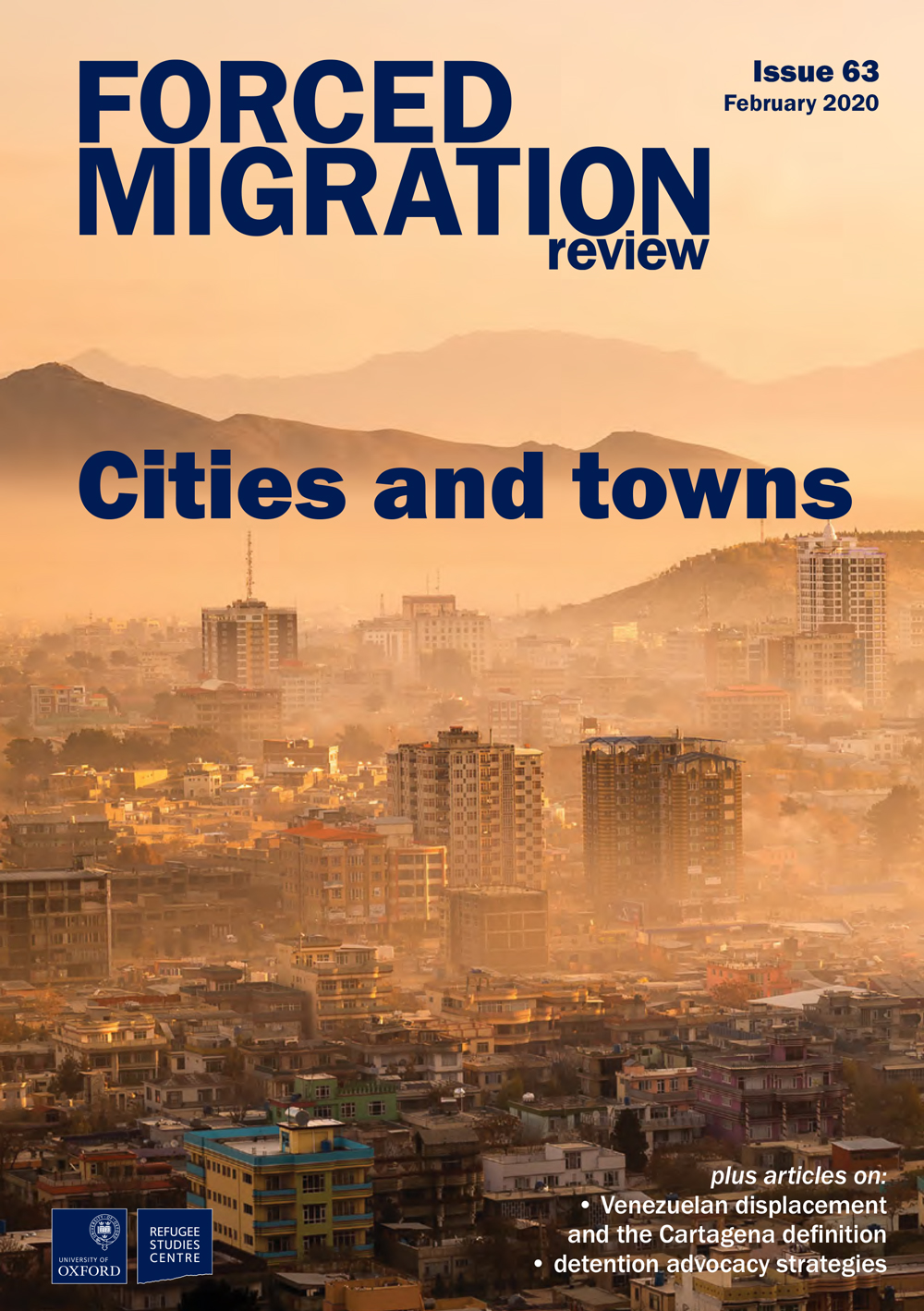مَلْجأٌ من الخَطَرِ مُخْطِرٌ: دروسٌ من سان بيدرو سولا
أفضَتْ أفعَالُ العصابات والإجرام المنظَّم الموصُولِ بالاتّجار الدوليّ في المُخدّرات، مع قَسْوةِ استجابة قوات أمن الدولة، أفضَتْ بالعُنْفِ إلى الثّوَرَان في هندوراس وإلى تعيين سان بيدرو سولا منْذُ بِضْعِ سنين خلت أعنفَ مدينةٍ في العالم (بسبب معدّل القتل العمد المرتفع…
دعوةٌ إلى العمل الجادّ: حشد الموارد المحليّة في إثيوبيا للنّازحين داخلياً في الحَضَر
في سنة 2018، فرَّ من النِّزاع العرقيّ في المنطقة الصوماليّة بإثيوبيا نحوٌ من 1340 أسرةً مُسجّلةً وكثيرٌ من النَّازحين داخلياً غير المسجّلين، مُلْتَمسينَ السلامة في أداما، وهي عاصمة منطقة أوروميا، الواقعة في جنوبيّ شرقيّ أديس أبابا، تبعد عنها 100 كيلومترٍ…
السّلطَةُ العموميّة المُتنازَعُ فيها في المناطق الحضريّة المُهمّشة: تحدّياتٌ واقعة على العاملين في ميدان العمل الإنسانيّ
لمّا بدأ السوريُّون الفارّون من الحرب الأهليّة يلجئونَ إلى الأردن ولبنان سنةَ 2011، رَكَزَتِ الجمعيّات الإنسانيّة الدوليّة أوّلَ جهد إغاثتها، في دَعْمِ الحكومات الوطنيّة. ومع ذلك، واعترافاً بتأثير البلديّات الضروريّ في دَعْم اللاجئين وإيصال الخدمات إليهم، نشأ تحوُّلٌ شديد في…
لاجئو الحَضَرِ في باكستان: خطوات في الطريق إلى الاعتماد على النفس
يُضيِّفُ إقليم خیبر پختونخوا ما ينيف على 50% من جملة اللاجئين الأفغان في باكستان، البالغ عددهم مليونين وسبعة أعشار المليون (2.7)، يقيم 32% منهم اليومَ في مخيّمات اللّاجئين. ويبقى 68% منهم، يقطنون في خارج المخيّمات، وأكثر ما يقطنون فيه حولَ…
تَحْسينُ المعلومات والتواصل لزيادَةِ اندماجِ لاجئي الحَضَر واعتمادِهم على أنفسهم
لا شكّ أنّ الوصولَ إلى الحدمات الأساسيّة وسُبُل المعاش، وإدماجَ اللاجئين في النسيج الاقتصادي للبلاد التي تستقبلهم، أساسانِ لتأهيل اللاجئين لأنْ يكونوا أفراداً مُنتجينَ صامدينَ في المجتمع. وقد يكون في المدُنِ الكبيرة التي تُضيّفُ اللاجئين، كنيروبي، مقارباتٌ مبتكرة لدّعْمِ أكثرِ…
الهَمَليّةُ وقُوّةُ الانْتِشارِ في الاستجابَةِ الإيوائيّة الحضريّة
لا يخفى على كثيرٍ من الناس -لا كلِّهم- في قطاع الإيواء أنّ من المستبعد أن يكونَ أحسن خِيَارٍ لأكثر الأُسَر حلاً واحداً يناسب جميع المحتاجين إلى الإيواء. ففي استعراضٍ حديث أُجرِيَ على 144 دراسةَ حالةٍ من حالات الإيواء، عُيِّنَتْ إحدى…
رُوحُ إعلانِ قرطاجنة؟ تَطْبيقُ تعريفِ اللاجئينَ المُوسّعِ على الفنزويليّين في أمريكا اللاتينية
أدَّت الأَزْمة السياسيّة والاقتصاديّة والإنسانيّة في فنزويلا إلى حالةٍ هي من أوسع حالات التَّهجير نطاقاً في أيامنا هذه. إذ تُضيّفُ أمريكا اللاتينية والكاريبي نحواً من ثلاثة ملايين وسبعة أعشار المليون إنسانٍ (3.7) من أصل أربعة ملايين ونصف مليون إنسانٍ (4.5)…
المُشاركَةُ النّاجعةُ بين المجتمع المدنيّ والحكومات في المسائل الدائرة حول الحَجْز
ما ركدَ جَيَشَانُ حَجْزِ المهاجرين بعد هجوم 11 سبتمبر/أيلول في الولايات المتحدة الأمريكيّة، ويتزايد مذ ذاك اعتيادُ الدولِ حَجْزَ الناس لأسباب أمنيّة. ويَكثُرُ ألّا توافق ظروف الحَجْزِ المعايير الدوليّة لحقوق الإنسان، فأثار الاهتمام بحقوق المَحْجُوزينَ وحمايتهم مجموعةً متنوّعةً من الاستجابات…

